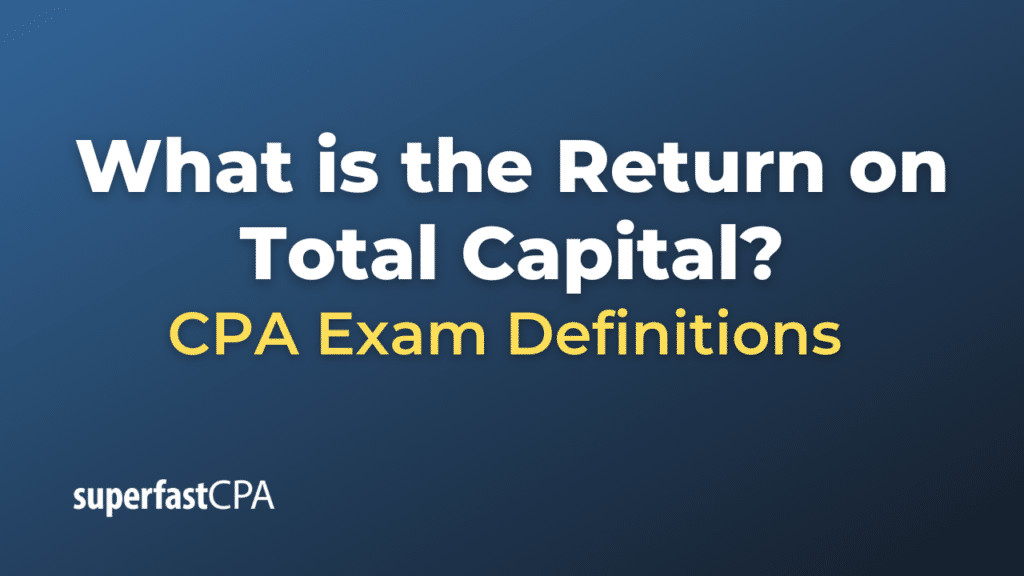Return on Total Capital
The Return on Total Capital (ROTC) is a profitability ratio that measures the return that a company generates on its total capital invested. This includes both equity and debt capital. It’s a useful metric to assess how effectively a company is using its capital to generate profits.
The formula for Return on Total Capital is:
ROTC = EBIT / TotalCapital
Where:
- EBIT stands for Earnings Before Interest and Taxes. This is used because it allows for a clearer comparison of how a company uses its capital, regardless of its financial structure (debt vs. equity) and tax strategy.
- TotalCapital typically includes long-term debt and total shareholders’ equity. It represents the total capital invested in the business.
This ratio is especially useful when comparing companies in capital-intensive industries or when trying to evaluate companies with varying levels of debt. A higher ROTC typically indicates that a company is effectively using its capital to generate returns.
Example of the Return on Total Capital
Let’s consider a hypothetical example to illustrate the calculation of Return on Total Capital (ROTC):
ABC Manufacturing Company’s Financial Data (in USD):
- Earnings Before Interest and Taxes (EBIT): $1,000,000
- Long-term Debt: $4,000,000
- Shareholders’ Equity: $6,000,000
From the given data:
Total Capital = Long-term Debt + Shareholders’ Equity
Total Capital = $4,000,000 + $6,000,000
Total Capital = $10,000,000
Now, plug these values into the ROTC formula:
ROTC = EBIT / TotalCapital
ROTC = $1,000,000 / $10,000,000
ROTC = 0.1 or 10%
In this example, ABC Manufacturing Company has a Return on Total Capital of 10%. This means that for every dollar of total capital invested in the business (including both debt and equity), the company generates a return of $0.10 before paying interest and taxes.
It’s important to then compare this ROTC value with industry peers or the company’s historical values to determine if it’s good, average, or below par.













